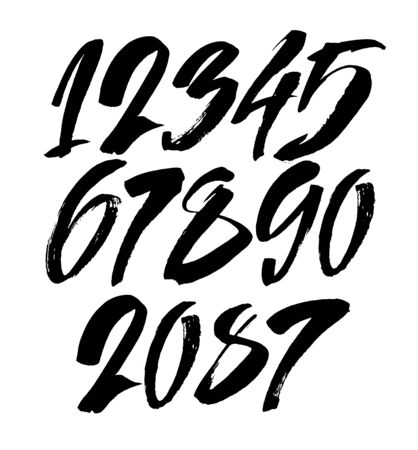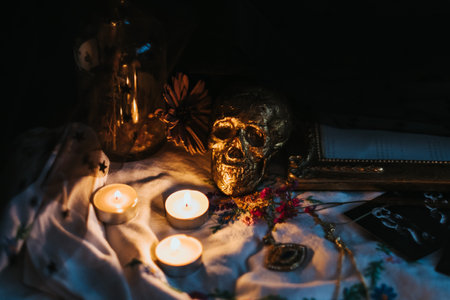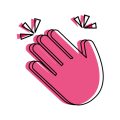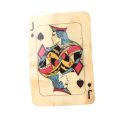1. The Mysterious Origins of Tarot
When most people in America think of Tarot cards today, they picture fortune-tellers in dimly lit rooms, shuffling colorful decks and revealing secrets about the future. But the true story behind Tarot’s beginnings is even more fascinating—and far less mystical—than many realize.
Early Beginnings: More Than Magic
Tarot cards didn’t actually start out as tools for divination or mystical insight. Historians trace their roots back to 15th-century Europe, especially Italy and France. Originally, Tarot decks were used for playing a card game called “tarocchi,” enjoyed by nobles and common folk alike. There was no fortune-telling involved at first; it was all about fun, strategy, and socializing!
Common Myths vs. Historical Facts
| Myth | Fact |
|---|---|
| Tarot originated in ancient Egypt or Atlantis | No historical evidence supports this claim—Tarot appeared in Europe during the Renaissance. |
| The earliest decks were always mystical tools | They were originally playing cards before being used for divination centuries later. |
| Tarot has always been connected to magic and the occult | The association with mysticism grew much later, especially in the 18th and 19th centuries. |
Symbols Rooted in History
The iconic images on Tarot cards—the Fool, the Magician, the Lovers—reflect European art, culture, and social values from hundreds of years ago. Their symbolism grew richer over time as artists and thinkers added layers of meaning, but these images weren’t designed for magical use at first.
How Tarot Became Associated with Mysticism
It wasn’t until centuries after their creation that Tarot cards started gaining a reputation as mystical tools. In the late 1700s and 1800s, writers and occultists like Antoine Court de Gébelin began claiming ancient connections, linking Tarot to Egyptian mysteries and secret wisdom. These stories captured imaginations but aren’t backed by solid historical proof.
Key Takeaway
The story of Tarot’s origin is a blend of history, culture, and a few tall tales. Far from being born out of ancient magic, these cards started as simple entertainment—and only later became associated with the mysteries we recognize today in American pop culture.
2. Tarot’s Journey Through Time
The story of tarot is like a winding road, full of twists and turns that stretch across centuries and cultures. It started as a simple card game in medieval Europe, but today, tarot is celebrated in America not just for fortune-telling, but also as a powerful tool for personal growth and self-discovery. Let’s take a closer look at how tarot has transformed through the ages.
From Playing Cards to Mystical Tools
Tarot cards first appeared in Italy during the 15th century as playing cards called “trionfi” or triumphs. These early decks were used mainly for entertainment rather than divination. However, by the late 18th century, people began to see tarot as a way to access hidden knowledge and mystical wisdom.
| Time Period | Main Use of Tarot | Key Regions |
|---|---|---|
| 15th Century | Card Games | Italy, France |
| 18th-19th Century | Mysticism & Fortune-Telling | France, England |
| 20th-21st Century | Spiritual Growth & Self-Reflection | United States, Worldwide |
The Shift from Fortune-Telling to Self-Discovery in America
In the early 1900s, tarot arrived in America alongside waves of European immigrants. At first, it was seen mostly as a tool for predicting the future. But over time, Americans began using tarot in new ways—turning to the cards for spiritual insight, mindfulness, and personal reflection. Today, many people use tarot to explore their inner world rather than to predict specific events.
Cultural Influences on Tarot’s Evolution
Tarot didn’t evolve in isolation. As it moved from Europe to America, it absorbed influences from various traditions—like psychology, New Age spirituality, and even pop culture. This blending of ideas made tarot more accessible and relevant for modern American life.
Tarot’s Role in Modern America
Now, you can find tarot decks featuring everything from classic Renaissance artwork to themes inspired by movies and comic books. Many therapists incorporate tarot into their practices to help clients understand themselves better. Whether you’re seeking guidance or just curious about your own story, tarot continues to offer new ways to connect with yourself and others.

3. Tarot Meets America
Tarot’s Journey Across the Atlantic
The story of tarot in America began in the late 19th and early 20th centuries, as immigrants brought European spiritual traditions to the New World. Tarot decks started appearing in specialty shops and were often linked with the rise of spiritualism—a movement fascinated by communicating with spirits and exploring the unseen.
Adapting Tarot to American Culture
As tarot gained popularity, it adapted to fit American values and ways of life. Instead of focusing solely on fortune-telling, tarot readings became a tool for self-reflection, personal growth, and empowerment. American publishers also created their own versions of decks, like the Rider-Waite-Smith deck, which became iconic across the country.
How Tarot Changed in America
| Aspect | Original European Use | American Adaptation |
|---|---|---|
| Main Purpose | Divination & Fortune-Telling | Self-Discovery & Personal Guidance |
| Deck Designs | Traditional Art Styles | Diverse Themes (pop culture, modern art) |
| Community Setting | Occult Societies & Private Circles | Bookstores, Festivals, Online Communities |
Tarot in Spiritual Revival Movements
The mid-20th century saw a wave of spiritual revival movements in America, like the New Age movement. Tarot cards became a staple at workshops and gatherings focused on meditation, astrology, and holistic healing. Many Americans turned to tarot as a way to connect with their intuition and explore alternative paths to wisdom.
Tarot and Counterculture
During the 1960s and 70s, tarot found a home within America’s counterculture. Young people seeking freedom from traditional norms embraced tarot as part of their exploration into mysticism, Eastern philosophies, and psychedelic experiences. Tarot readings became common at music festivals, coffeehouses, and college campuses—symbols of questioning authority and searching for deeper meaning.
Tarot’s Role in American Pop Culture
Today, tarot is everywhere in American pop culture—from movies and TV shows to Instagram feeds and celebrity interviews. Modern artists reinterpret classic decks with fresh designs. Tarot is featured in popular series like “Chilling Adventures of Sabrina” or referenced in songs by major music stars. For many Americans, tarot has become both a tool for insight and a fun way to connect with friends.
4. Modern American Tarot Practice
Tarot in Everyday American Life
In today’s America, tarot is more popular than ever before. It’s no longer just a mystical tool for fortune-telling; it has become part of daily routines, wellness practices, and even social conversations. People from all walks of life are embracing tarot as a way to reflect, seek guidance, or simply have fun with friends.
Professional Tarot Readings
Many Americans now turn to professional tarot readers for insight into their personal lives, relationships, or career decisions. These readings often happen in person at metaphysical shops, at events like fairs and festivals, or virtually through websites and video calls. Here’s a quick look at where Americans commonly get their tarot readings:
| Setting | Description |
|---|---|
| Metaphysical Shops | Walk-in readings with local readers in specialty stores |
| Online Platforms | Virtual sessions via dedicated tarot reading websites and apps |
| Events & Festivals | Pop-up booths at fairs, markets, and spiritual gatherings |
| Private Sessions | One-on-one appointments at home or over the phone/video chat |
Tarot for Personal Empowerment and Wellness
A growing number of people use tarot cards for self-reflection and empowerment rather than prediction. Drawing a card each morning for inspiration, journaling about card meanings, or using tarot in meditation are common practices. Many therapists and life coaches incorporate tarot as a tool to help clients explore feelings and set intentions.
Popular Ways Americans Use Tarot for Wellness:
- Daily card draws for motivation or affirmation
- Journaling prompts based on card meanings
- Meditation or mindfulness exercises with specific cards
- Group workshops focusing on self-growth through tarot symbolism
The Influence of Social Media
Social media platforms like Instagram, TikTok, and YouTube have given tarot a massive boost in visibility and acceptance. Influencers share daily readings, deck reviews, tutorials, and creative spreads. This online presence makes tarot accessible to beginners and helps create vibrant communities where people can learn together.
Social Media Trends Shaping Modern Tarot:
- #TarotTuesday: Weekly posts sharing card pulls and insights
- Live streaming group readings and Q&A sessions
- User-generated memes connecting tarot to pop culture
- Diverse creators making tarot more inclusive across backgrounds and identities
Tarot Decks: A Reflection of American Diversity
The range of tarot decks available in the U.S. is wider than ever. Artists design decks that celebrate different cultures, interests, fandoms, and identities—making it easy for anyone to find a deck that feels personal.
| Deck Type | Description/Theme Example |
|---|---|
| Traditional Decks | Classic designs like Rider-Waite-Smith or Thoth Tarot |
| Themed Decks | Nature-inspired, pop culture (e.g., TV shows), fantasy art themes |
| Diversity-Focused Decks | Cultural representation, LGBTQIA+ inclusion, body positivity art styles |
| Indie Artist Decks | Unique artwork by independent creators often crowdfunded online |
The Everyday Impact of Tarot in America Today
Whether used as a serious tool for self-discovery or a fun way to connect with friends online, tarot has found its place in American culture. Its adaptability allows people to make it their own—fitting into busy lifestyles while encouraging mindfulness, creativity, and community.
5. Controversies and Cultural Impact
Tarot has always sparked passionate debates in American culture. As Tarot evolved from a mystical tool to a mainstream phenomenon, questions about its legitimacy, cultural roots, and influence on American identity have come to the forefront.
Debates Around Tarot’s Legitimacy
One of the biggest controversies is whether Tarot truly holds any mystical power or if it’s just a fun game for self-reflection. Some people swear by Tarot readings, believing the cards can reveal hidden truths or guide life decisions. Others see it as pure entertainment—no more magical than reading a horoscope in the newspaper. In America, this debate plays out everywhere from spiritual shops to online forums.
| Viewpoint | Description |
|---|---|
| Believers | See Tarot as a genuine tool for insight and guidance |
| Skeptics | Consider Tarot readings as psychological prompts or just coincidence |
| Neutral/Curious | Enjoy Tarot for creativity or fun, without strong beliefs either way |
Cultural Appropriation Concerns
Tarots roots trace back to European and possibly even older traditions. As it became popular in America, some communities began questioning if modern uses of Tarot respect its original cultural context. Critics argue that mass-market decks and casual use can strip away the history and meaning behind the cards. Supporters counter that Tarot has always evolved with each new culture that adopts it, making adaptation part of its journey.
Common Appropriation Issues:
- Using sacred symbols without understanding their meaning
- Commercializing traditional imagery for profit
- Lack of representation for the cultures where Tarot originated
Intersection with Religion
The relationship between Tarot and religion is complex in America. While some see no conflict—viewing Tarot as separate from organized faith—others feel uneasy about mixing Tarot with their religious beliefs. Certain Christian groups have historically warned against Tarot, associating it with occult practices. Yet, many Americans integrate Tarot into personal spiritual routines, blending it with meditation, yoga, or mindfulness practices.
Religious Responses to Tarot:
- Christianity: Often skeptical or disapproving, but attitudes are shifting among younger generations.
- New Age/Spiritual: Embrace Tarot as a tool for growth and reflection.
- No Religious Affiliation: View Tarot as cultural or artistic rather than spiritual.
Ongoing Influence on American Creativity and Identity
No matter where you stand on these debates, there’s no denying that Tarot has made its mark on American creativity. From fashion lines inspired by card imagery to movies and music videos featuring dramatic spreads, Tarot is everywhere in pop culture. People use it not only to seek answers but also as inspiration for writing stories, designing art, or simply expressing their unique identities.
Examples of Tarot’s Creative Impact:
- Art & Design: Decks created by diverse American artists reflect personal stories and social issues.
- Literature & Film: Tarot symbolism appears in novels, TV shows, and movies as a storytelling device.
- Lifestyle: Tarot-themed events, clothing, and home décor highlight its ongoing popularity.
The conversation about Tarot’s role in America is far from over. Whether you see it as mystical wisdom or modern art, its controversies and cultural impact continue to shape how Americans see themselves—and each other—today.


